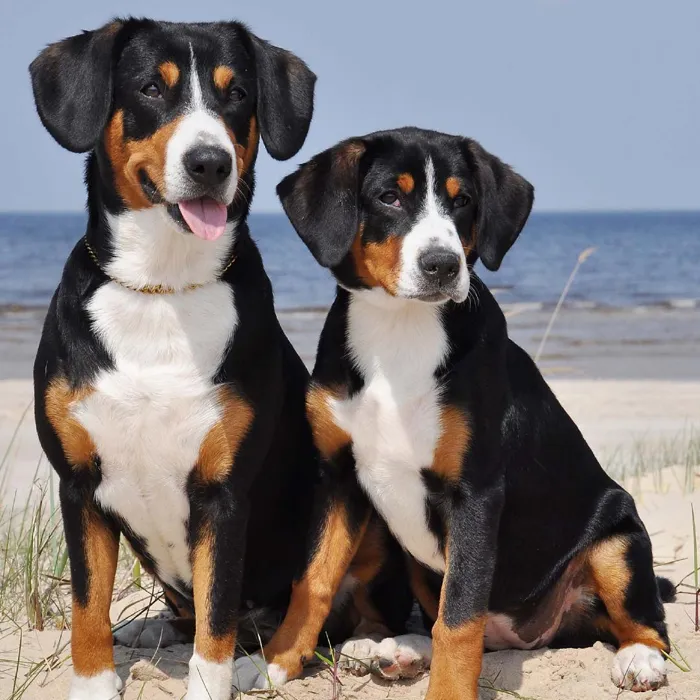Entlebucher Mountain Dog

The Entlebucher Mountain Dog, tricolor “Laughing Dog” of the Swiss Alps, is a rugged and determined mover of cattle. These spirited, energetic workers and athletes are independent problem solvers and are happiest with a job to perform.

Ask About Entlebucher Mountain Dog ?
Breed Traits
General Appearance
The Entlebucher Mountain Dog (Shepherd Dog from Entlebuch, or Dog of the Alpine Herdsman) is a native of Switzerland, and the smallest of the four tri-colored Swiss Sennenhund breeds. Swiss farmers have historically used the Entlebucher to move cows from pasture to pasture in the Alps. Their keen intelligence, speed and agility also made them useful for the management of other large animals such as horses and hogs. The Entlebucher is a medium-sized, compact, strongly muscled, elongated drover with ample bone. He has a short, hard and shiny coat, bright black with symmetrical markings of pure white on blaze, muzzle, chest, and feet; shades of rich fawn to mahogany are present on the eyebrows and between the black and white markings. Prized for his agreeable nature, ease of training, and devotion to family, the Entlebucher possesses an excellent work ethic, and the ability to work alone or in harmony with his master. Given a job, he transforms from a lively, high-spirited playmate, to a serious, tireless, selfassured dog of commanding presence. Although primarily a drover, Entles excel at competitive sports and are willing and enthusiastic partners in any athletic canine activity chosen by their master. Purpose and heritage have resulted in an unusually intense bonding between the Entlebucher and his master; however the Entlebucher should not be considered a breed for the casual owner. He will remain an active, highly energetic dog for his entire lifetime. Because of the guardian traits of this breed, thorough socialization is required during puppyhood; typically Entles are indifferent to, or somewhat aloof with, strangers.
Size, Proportion, Substance
Head
Neck, Topline, Body
Forequarters
Hindquarters
Coat
Color
Gait
Temperament
Faults
Disqualifications
Group
Herding
About
History
Standard
Nutrition
Grooming
Exercise
Training
Health
All pets have found there homes! Sign up to be notified when new pets are added so you don't miss out.


